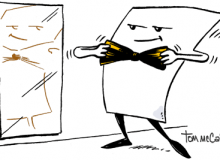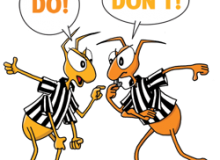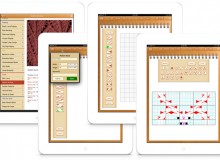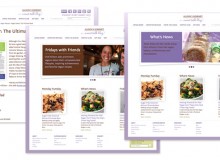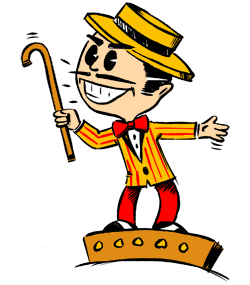 Trade shows aren’t obligatory events like visiting your in-laws. Show up. Be polite. Try not to check your watch too many times. Nope, with trade shows, you need passion to make them work as well as a good plan and some skills. Here’s how to exceed expectations at your next trade show exhibition.
Trade shows aren’t obligatory events like visiting your in-laws. Show up. Be polite. Try not to check your watch too many times. Nope, with trade shows, you need passion to make them work as well as a good plan and some skills. Here’s how to exceed expectations at your next trade show exhibition.
Do
- Have goals for the show.
- Get buy-in from management.
- Develop a schedule and stick to it.
- Research who will be attending—nothing saves the day if it’s the wrong show to begin with.
- Appoint a booth captain—someone needs to be in charge.
- Pay for better locations—draw an inverted triangle beginning at the entrance and set your priorities accordingly.
- Watch out for columns, they are always bigger than shown on the floor plan.
- Carefully choose who staffs the booth—just say no to aggressive reps.
- Select your featured products and services wisely.
- Consider renting a larger space—especially 20’ instead of 10’.
- Build a custom and modular booth if you can afford it. If designed well, it can be broken down to smaller sizes for a wider variety of show options.
- Train booth staff—then train them some more.
- Develop a lead distribution and follow-up plan.
- Create professional, compelling booth graphics.
- Send a pre-show promotion—include customers and key prospects, not just show registrants.
- Plan meetings with existing customers.
- Offer something for which you would normally charge—survey, assessment, product trial, etc.
- Stage PR events—new product announcements, media briefings, etc.
- Bargain for an even better location next year—start now.
Don’t
- Exhibit with a half-hearted approach—failure will be self-fulfilled.
- Go in and out of shows based on the economy—if it’s a good show, you’ll benefit from consistent participation.
- Think Rome was built in a day—the exposure you gain may not produce tangible benefits (sales) until long after the show.
- Clutter your booth with excessive numbers of people or products.
- Turn your exhibit into a phone booth—turn off the digital devices and concentrate on the people in front of you.
- Eat lunch, read a book or sit down in your booth—you end up not looking engaged and ready.
- Compete with major show-sponsored events—check schedules before booking customer parties, etc.
- Dress ultra casually just because registrants do—be professional.
- Neglect existing clients for prospects—the best source of new business is always current customers.
- Assume that registrants don’t want to have fun—even if you’re in a “serious” business segment.
- Underestimate the power of show networking.
- Decide that everything you feature has to be the latest and greatest—lots of people new to an industry are just learning about the tried and true.
- Forget to do a post-show analysis.
- Hand out useless junk—make giveaways practical items that represent your business well.
- Try to “capture” people who stop by your booth—it’s not a used car lot.
- Underspend on the premise of saving money—you may be minimizing your returns by cutting the wrong corners.
- Display your expensive literature near the front of your booth where folks can snatch and run—set it back further and allow staff to qualify the lead by using the literature as a tool.
- Use the high school science fair look in your booth—a seamless image trumps a zillion little bits of paper velcroed to a fabric wall.
![]()
Less Is More. Doing the right shows exceptionally well is your goal. Volume doesn’t always translate into success. Avoid costly mistakes by attending a conference as a registrant before exhibiting. Participate in sessions, evaluate the level of attendees and walk the exhibit hall. Gauge the degree of involvement and ask exhibitors their opinions of the show. Set up a scoring system and compare it to your best conferences. If it’s a “go,” then pour your marketing heart and soul into making your exhibit a success.
![]()
— by Larry Bauer
